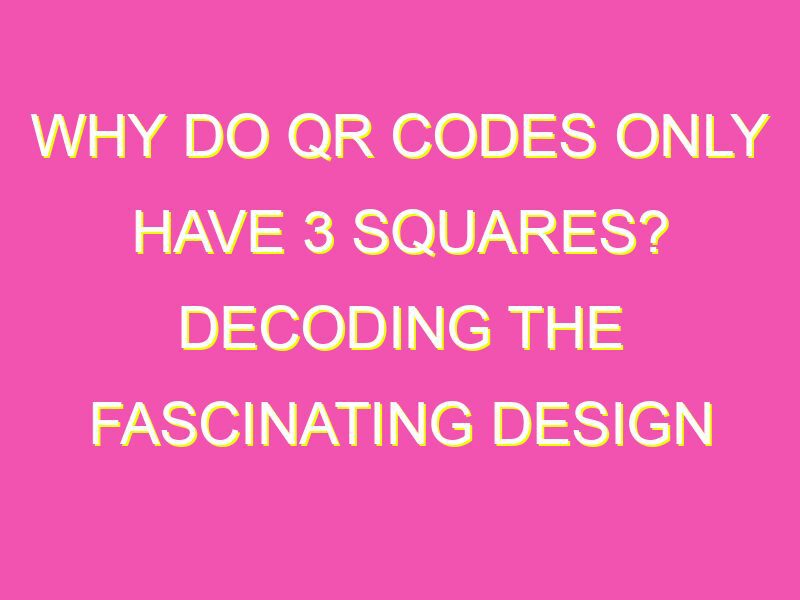Did you know that QR codes have a trio of essential squares, known as the finder pattern? These squares are crucial for the function of the code and help optical scanners read the information. Here are some key things to know about the finder pattern:
Next time you come across a QR code, take a moment to appreciate the role of those three squares!
The Importance of Finder Pattern in QR Codes
QR Codes, short for Quick Response Codes, are two-dimensional barcodes that are widely used in various industries, including marketing, advertising, retail, and logistics. One of the key design elements of QR Codes is a pattern of black and white squares that is strategically placed on three corners of the code. This pattern, called the finder pattern, serves a crucial role in the scanning and interpretation of QR Codes.
Understanding the Scanning Process of QR Codes
To understand the importance of the finder pattern, it is essential to have a basic understanding of how QR Codes are scanned and decoded. When a QR Code is scanned, an optical scanner captures an image of the code and translates it into a digital signal. This signal is then interpreted by software, which extracts the information contained in the code and performs the desired action, such as opening a website or displaying product information.
How QR Code Scanners Detect Directions
One of the challenges in reading QR Codes is to determine the orientation of the code – that is, whether the code is positioned horizontally or vertically. The finder pattern in QR Codes allows the scanner to detect the orientation by identifying the location of the three black squares. By analyzing the pattern of dark and light squares around these squares, the scanner can determine the direction in which the code is embedded.
The Three Squares on Three Corners of QR Codes
The three black squares of the finder pattern are placed on three corners of the QR Code, forming an L-shaped pattern. The fourth corner of the code is left blank to provide a reference point for the scanner. Additionally, there are two more smaller squares placed next to each of the larger squares, creating a nested sequence of alternating black and white squares. This sequence is specific to QR Codes and serves as a unique identifier for the code.
QR Code Design Elements: Finder Pattern Explained
The design of QR Codes follows strict guidelines to ensure that they can be easily scanned and decoded by a variety of devices. The finder pattern is an integral part of this design and serves multiple purposes. In addition to helping the scanner detect the orientation of the code, the pattern also helps to compensate for distortion or damage to the code, improving the accuracy of the decoding process.
BULLET POINTS:
– Finder pattern is a sequence of black and white squares on QR Codes
– The pattern helps scanners detect the direction of the code
– Finder pattern also helps with error correction and compensates for damage to the code
How QR Code Finders Patterns Help with Error Correction
Another benefit of the finder pattern in QR Codes is its role in facilitating error correction. QR Codes use Reed-Solomon error correction, which means that a certain amount of the code can be damaged or distorted without affecting the overall readability of the code. The finder pattern helps to identify which parts of the code are damaged and assists in reconstructing the original data.
The Role of Optical Scanners in QR Code Reading and Decoding
Finally, it is important to note that the effectiveness of the finder pattern is dependent on the quality of the scanner used to read the code. Optical scanners must be able to capture a clear image of the code and accurately interpret the pattern of squares. As technology advances, the accuracy and reliability of scanning devices continue to improve, making QR Codes even more widely used in a range of applications.
In conclusion, the finder pattern in QR Codes is a crucial design element that serves multiple functions, from enabling scanners to detect the direction of the code to facilitating error correction. As QR Codes continue to be used in various industries, it is important to understand the role of the finder pattern in ensuring their readability and effectiveness.





